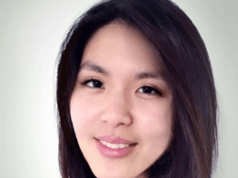By Paola Gammuto
Hemodyn 2013—The International Vasculab Conference, chaired by Dr Fausto Passariello, was held on 7–9 November 2013 at Accademia Aeronautica di Pozzuoli, Italy.The event was a success with an outstanding attendance and a very interesting scientific programme with important clinical updates on vascular disease. It provided great learning and a huge opportunity for all delegates. The venue was stunning and there was a real buzz of excitement throughout the event.
The primary goal of the conference was to rebuild the spirit of the “Vasculab international and virtual community” (active since 1990), aimed at the dissemination of new knowledge in the field of vascular diseases to promote scientific discussions and planning of future research work, focusing on their controversial aspects, pathogenesis and diagnosis, medical and surgical therapy.
The chairman, Dr Passariello (Centro Diagnostico Aquarius, Naples, Italy) welcomed the delegates and thanked the sponsors, the Scientific Committee and the experts from around the world, who kindly offered their help to achieve the conference’s goal.
The high cultural level of presentations was evident throughout the programme.
CHIVA (Cure Hémodynamique de l’Insuffisance Veineuse en Ambulatoire) today still represents a revolutionary conservative and haemodynamic strategy for the treatment of venous insufficiency. The session on this subject was chaired by Prof C Franceschi, who presented a physiopathological model for venous insufficiency, essentially based on the changes in transmural pressure, on the activity phases of the calf muscle pump and on the fractionation effect of competent valves on the hydrostatic pressure. Passariello presented a schematic overview of the systolic-diastolic reflux and introduced also the office-based CHIVA for endovenous conservative procedures.
The session on the diagnosis of various types of vascular malformation (venous, lymphatic, arteriovenous and combined haemolymphatic defects) was chaired by Prof BB Lee. “The venous and lymphatic systems are a mutually dependent dual outflow system of the circulation and the lymphatic capillary is an integral part of a single ‘phlebolymphatic unit’,” Prof Lee said in his lecture on phlebolymphedema.
The use of foam in sclerotherapy is an interesting application of soft matter physics. The knowledge of foam interaction with living tissues can be useful in getting better therapeutic results reducing probable side effects. The session was chaired by Prof L Tessari.
The session on CCSVI and its recent advances in research was chaired by Prof P Zamboni, who showed how IVUS can detect jugular and azygous primary venous obstruction and valve defects in the same way it is applied to diagnose May-Thurner and Budd-Chiari syndromes respectively in iliac veins and inferior vena cava or to detect defective valves in the saphenofemoral junction. In addition, the diagnosis could be improved using multimodality techniques and new MRI and ultrasound quantitative methods.
As leader of several surgical centres, T King presented his experience of 46,574 cases of great saphenous vein laser ablations, showing low rates of SVT/DVT and generally non-evolutive EHIT/PASTE conditions. Although a consequent pulmonary embolism is very rare, it can be extremely severe. Available data are confusing and further studies are needed to understand the physiopathology and the practical meaning of PASTE.
Passariello introduced the X-PASTE score, which extends the previous PASTE/EHIT classification, providing a tool to classify and giving a score to thrombosis extension.
P Verde, medical officer of the Italian Air Force showed in plain and clear language the physiology of the cardiac and vascular system during high performance flight. In aviation medicine, acceleration is usually classified according to their duration and to the direction in which they act on the body. The so called long duration accelerations are met during various aircraft maneuvers as launch and re-entry of space vehicles.
Abstracts and further information about this important event are available at the web page: Http://www.vasculab.it/hemodyn2013.xml
The speakers addressed several pointed and challenging questions from the audience, all discussed with good-natured candor. The ambience was cordial, and it was clear that everybody was there to learn something new and potentially transformational. It was also evident that everybody appreciated the incredible synergy, the high quality of the presentations, the innovative ideas and the forthright dialog.
This event received best wishes from a large number of participants from all over the world.
Paola Gammuto is a Qualitative Research Moderator, Naples, Italy












